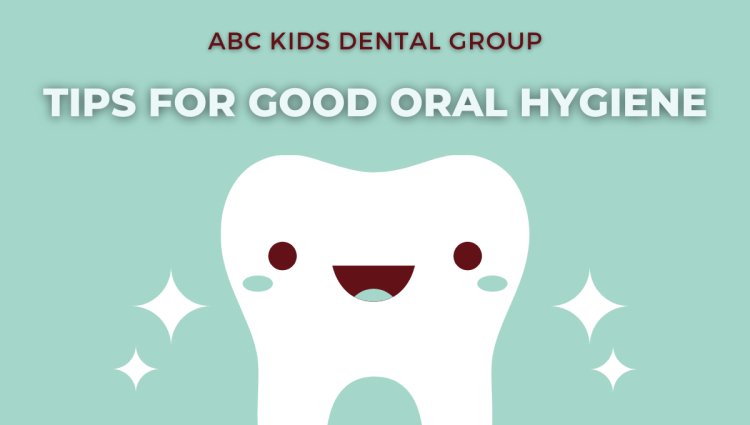Tips for good Oral Hygiene and Healthy Smiles
The mouth is home to billions of bacteria within the mouths of our patients at any given moment. A large portion of these bacteria accumulates in the form of plaque,

The mouth is home to billions of bacteria within the mouths of our patients at any given moment. A large portion of these bacteria accumulates in the form of plaque, causing tooth decay (cavities) and gingivitis that can result in periodontal (gum) illness. To maintain a healthy smile you must maintain regular oral hygiene. Brushing your teeth after meals, using mouthwash with antimicrobials, and flossing at a minimum every day can help prevent these bacteria that cause disease from developing in your mouth and leading to tooth decay. A healthy diet that limits starchy and sugary foods can help to keep bad bacteria under control.
Where does tooth decay originate where did it come from?
Your mouth is home to a variety of community of bacteria that recycle your drinks and food. Through this process, the bacteria could cause dental teeth to decay by consuming sugars found in the food and drinks we drink to multiply - and creating waste as biofilms, which is also called dental plaque. This plaque permits all those tiny recyclers to stay on your teeth for a longer period of time until eventually, they create acids, which wear away the tooth enamel and lead to cavities. The bacteria that live in the plaque that forms around the gums also create toxic substances that get into the gum tissue and cause gingivitis. If left untreated, gingivitis can turn into periodontitis. This is an even more serious condition in which there is tissue and bone loss within the teeth.
A lot of the food items that you consume cause the mouth bacteria to create acids. Sugary foods are an obvious source of plaque, however, there are many other food items that you don't know may cause harm. Starches, such as crackers, bread cereal, and crackers--also cause acid to form. The dental plaque that is formed by bacteria also produces substances that cause irritation to the gums, which makes them red, sensitive, and prone to bleeding. This may result in gum disease which causes gums to pull away from teeth and create pockets that are filled with pus and bacteria. If the gums aren't properly treated, the bone surrounding the teeth could be damaged and teeth could be loose or need removal.
What can I do to prevent tooth decay?
The best method to prevent tooth decay and eliminate plaque is to keep cleansing and brushing your teeth each day. Brushing helps remove plaque from the surfaces of your teeth. Clean your teeth two times every day using a soft-bristled toothbrush. The shape and size of your toothbrush must be appropriate for your mouth, allowing you to easily reach all areas. Make sure you use an antimicrobial toothpaste that contains fluoride, which protects your tooth from decay. Cleanse your teeth twice every day using floss or interdental cleaning products to get rid of plaque between your teeth, in places that the toothbrush isn't able to reach. Flossing is crucial to avoid gum disease.
Correctly brushing and flossing techniques
Brushing
- Make sure your toothbrush is on a 45-degree angle to the gums.
- Move the brush gently with shorter (tooth-wide) strokes.
- Clean the surfaces of your teeth and the inner tooth surfaces along with the chewing surface of your teeth.
- Make use of the edge of the brush to scrub the inner areas of your front teeth with a gentle stroke that moves up and down.
- Use your tongue brush to get rid of the bacteria and freshen your breath.
Flossing
- Cut off around 18 inches of thread, then weave it between one of the fingers in both hands. Keep the floss in place between your thumbs and forefingers.
- Move the floss in between the tooth by using an easy rubbing motion.
- Once the floss is at that gum line bend it into a C-shape with one of the teeth. Carefully slide it into the area between the gum and the tooth.
- The floss should be returned to the point of contact between teeth, and then move the floss either up or down to the opposite side. adjusting the shape of the floss to that of your tooth.
- Secure the floss to the teeth. Carefully rub the sides of the tooth and move it away from the gum using upward and downward motions.
- Repeat this process on the remaining teeth.
Use mouthwash to increase your protection
The use of mouthwash, in addition to regular flossing and brushing, can improve the hygiene and hygiene of your teeth. Antimicrobial mouth rinses can reduce the amount of plaque and bacteria, which can cause gingivitis and gum disease. The fluoride-based mouth rinses can also help in preventing and reducing tooth decay. Consult your dentist regarding any new products you would like to try. It is not recommended for everyone to use an oral rinse with fluoride. For example, fluoride rinses are not advised for children who are younger than 6 years old since they could swallow the rinse. Always refer to the label on the product for age-specific recommendations and precautions and speak with your dentist regarding the use of fluoride mouthwash.
Here are some additional suggestions for maintaining good gums and teeth.
- Reduce your daily intake of drinks with added sugar.
- Take plenty of fluoridated water during meals and with sweetened drinks to cleanse the acids and sugars.
- Utilize a straw to reduce the contact between sweetened beverages to your teeth.
- Add (or substitute) sweet drinks with yogurt, milk, or water.
What's Your Reaction?























